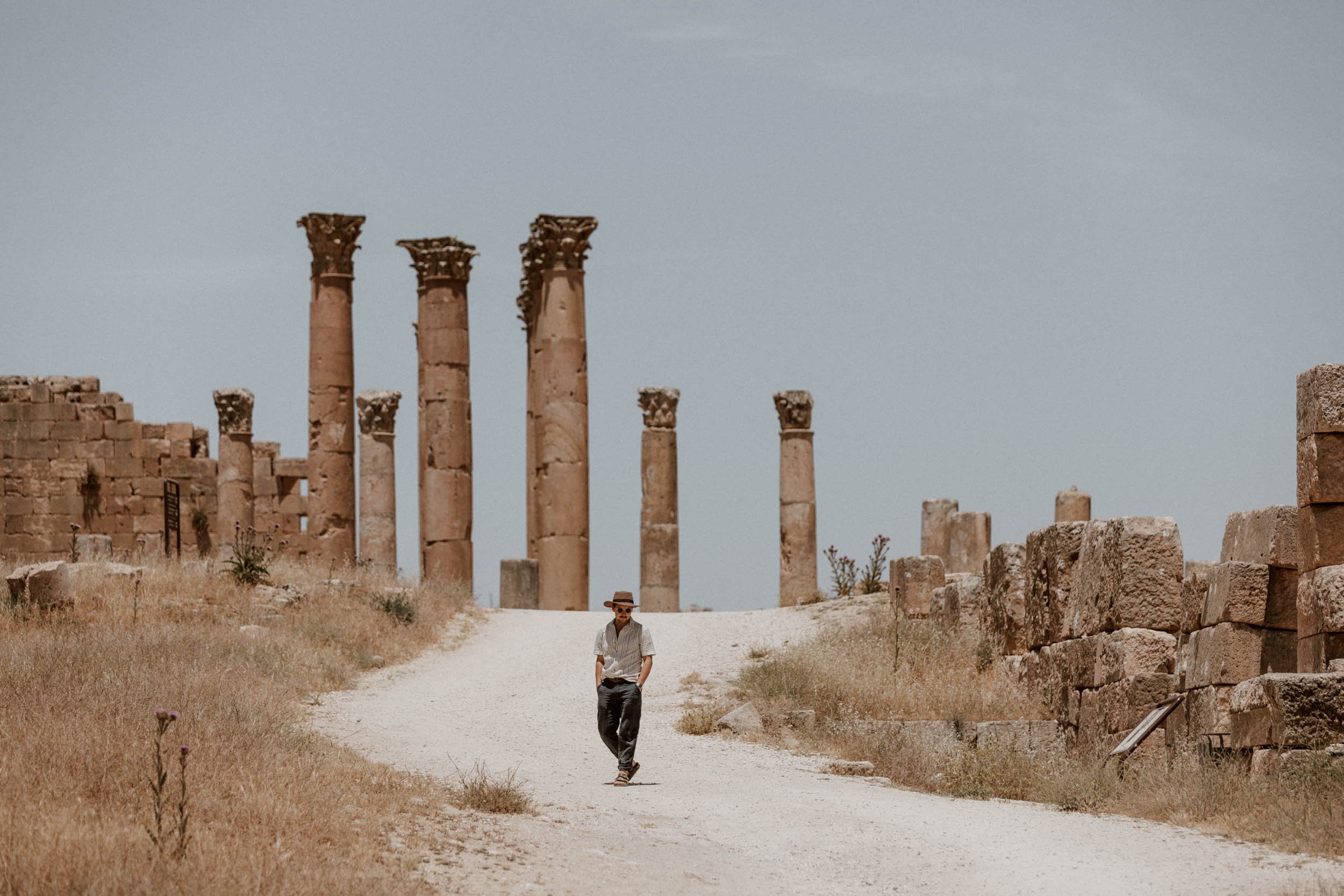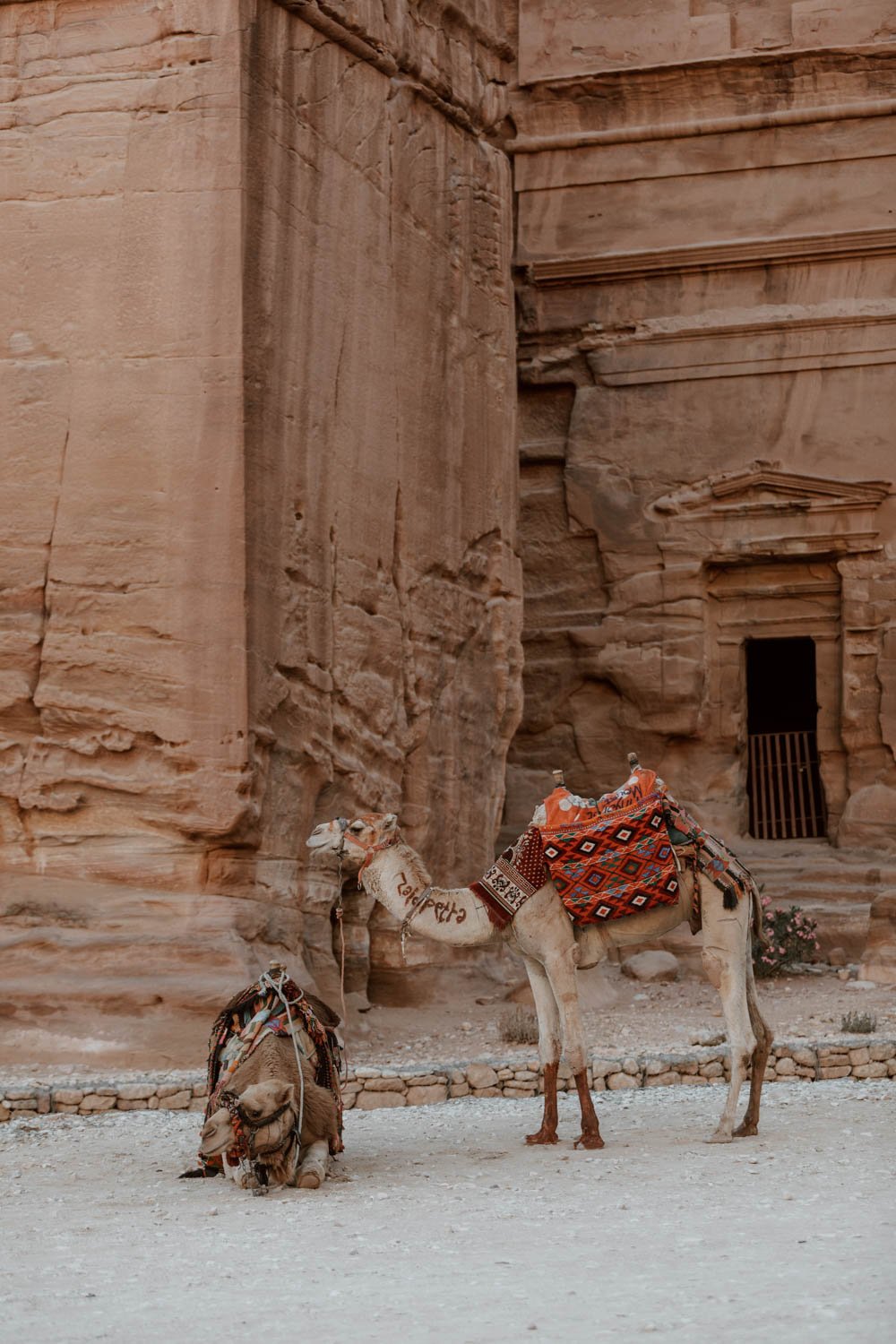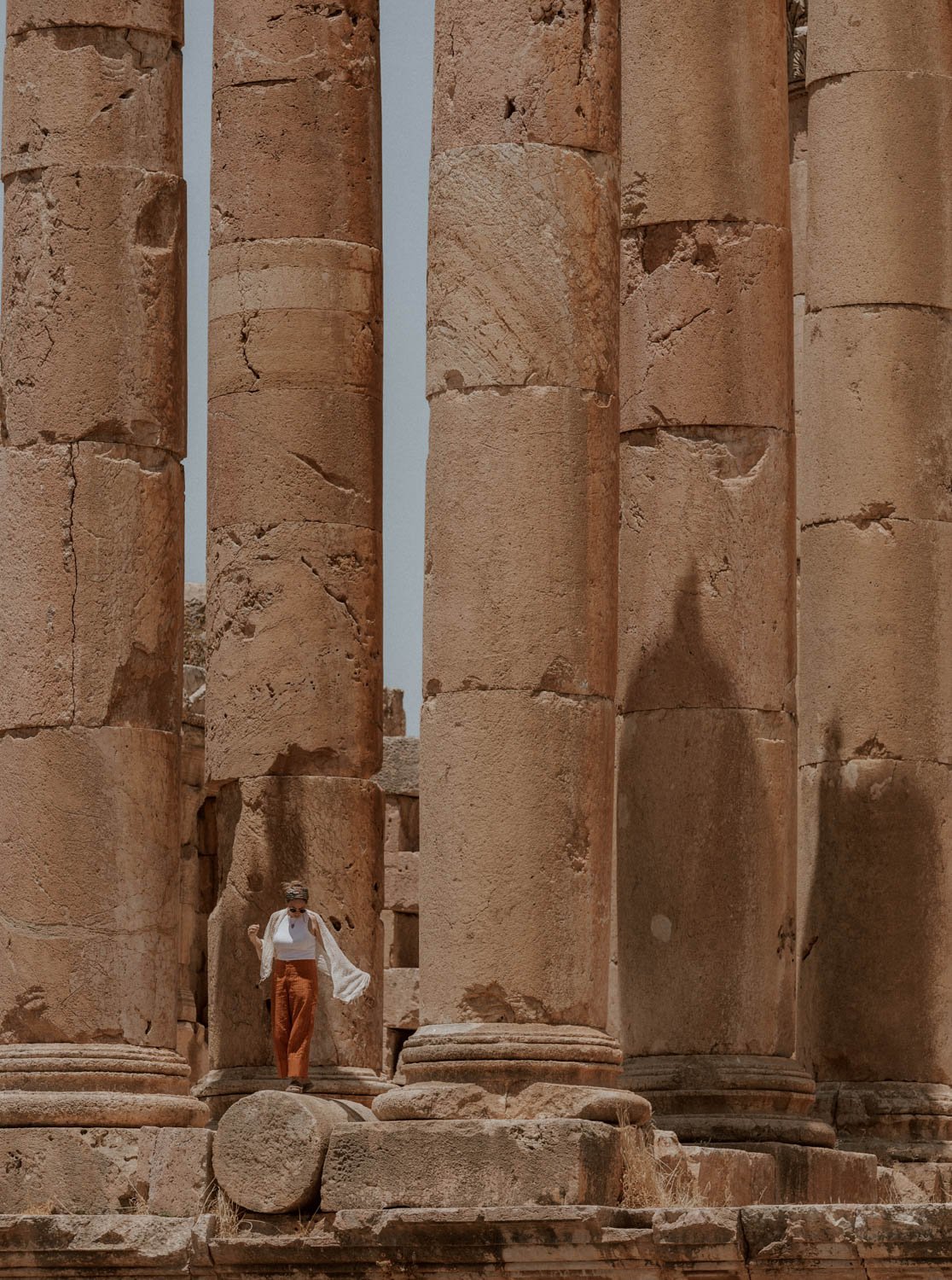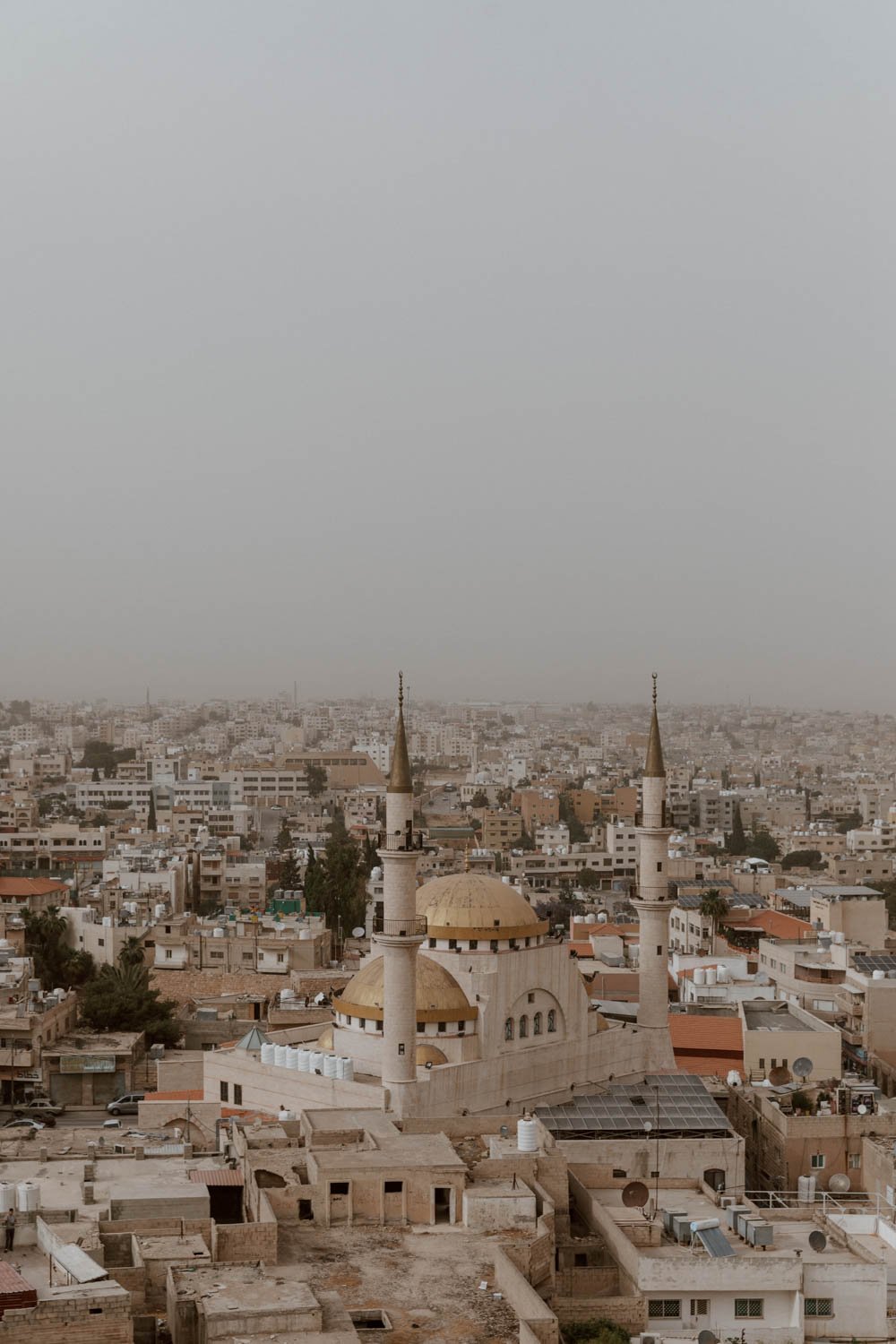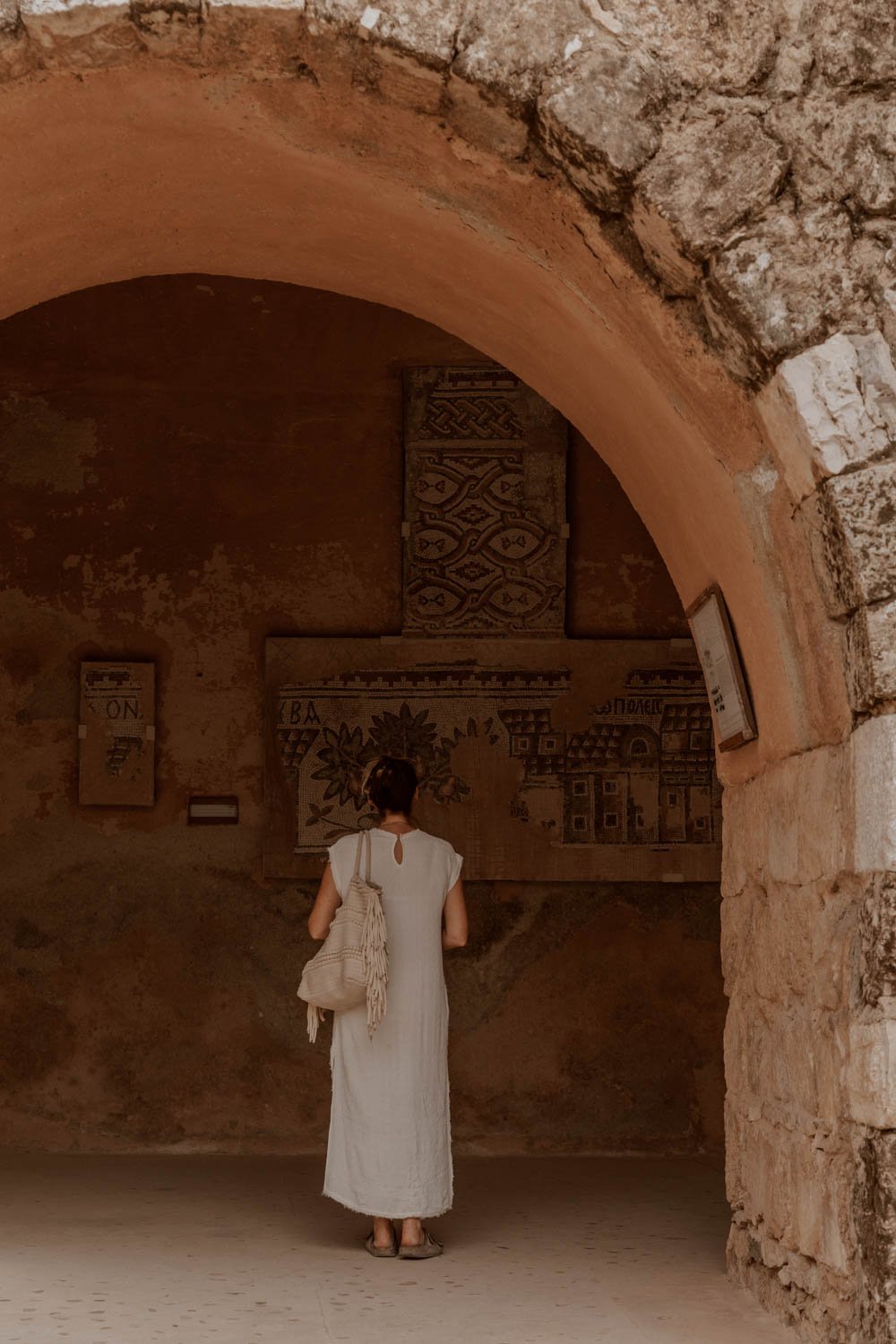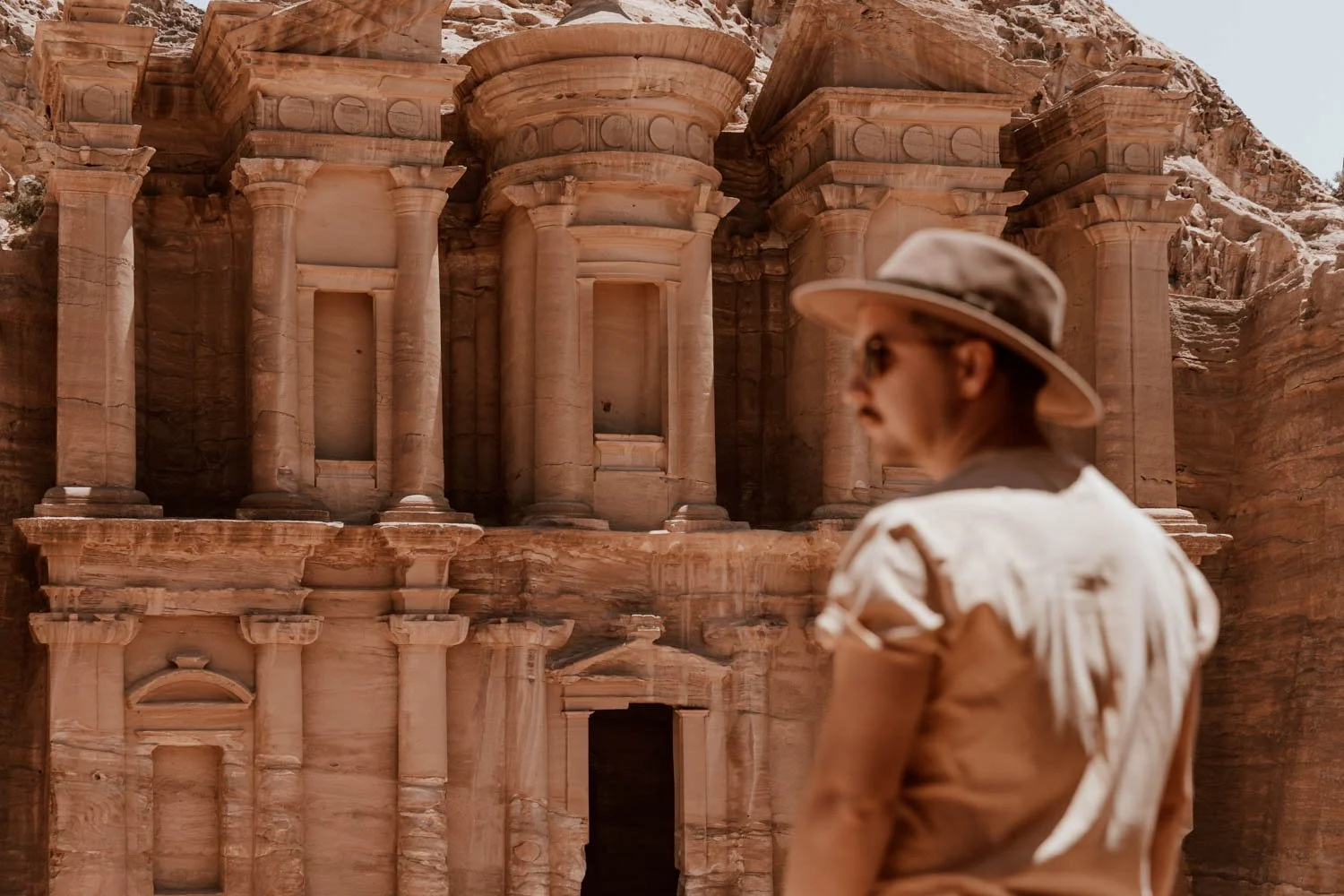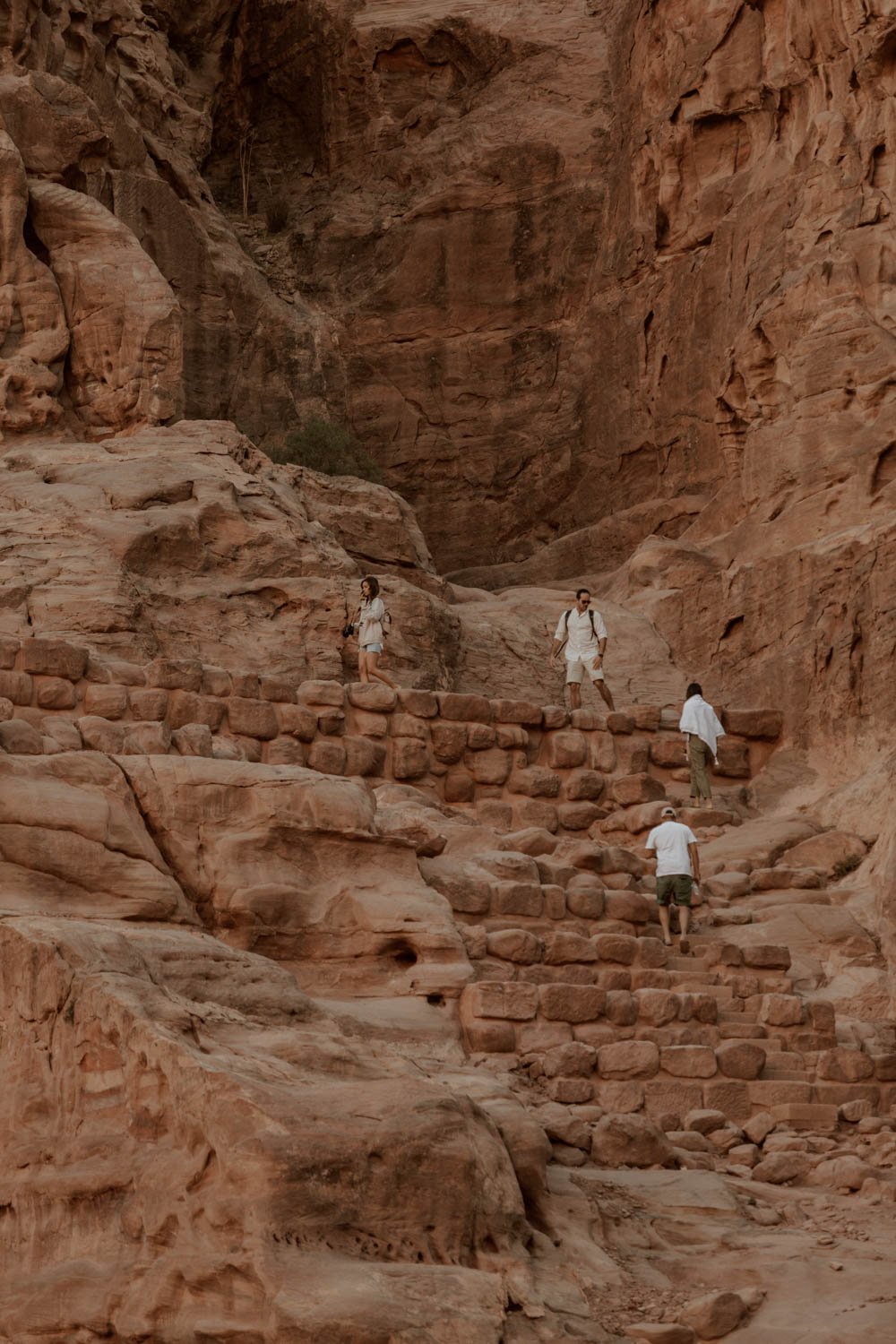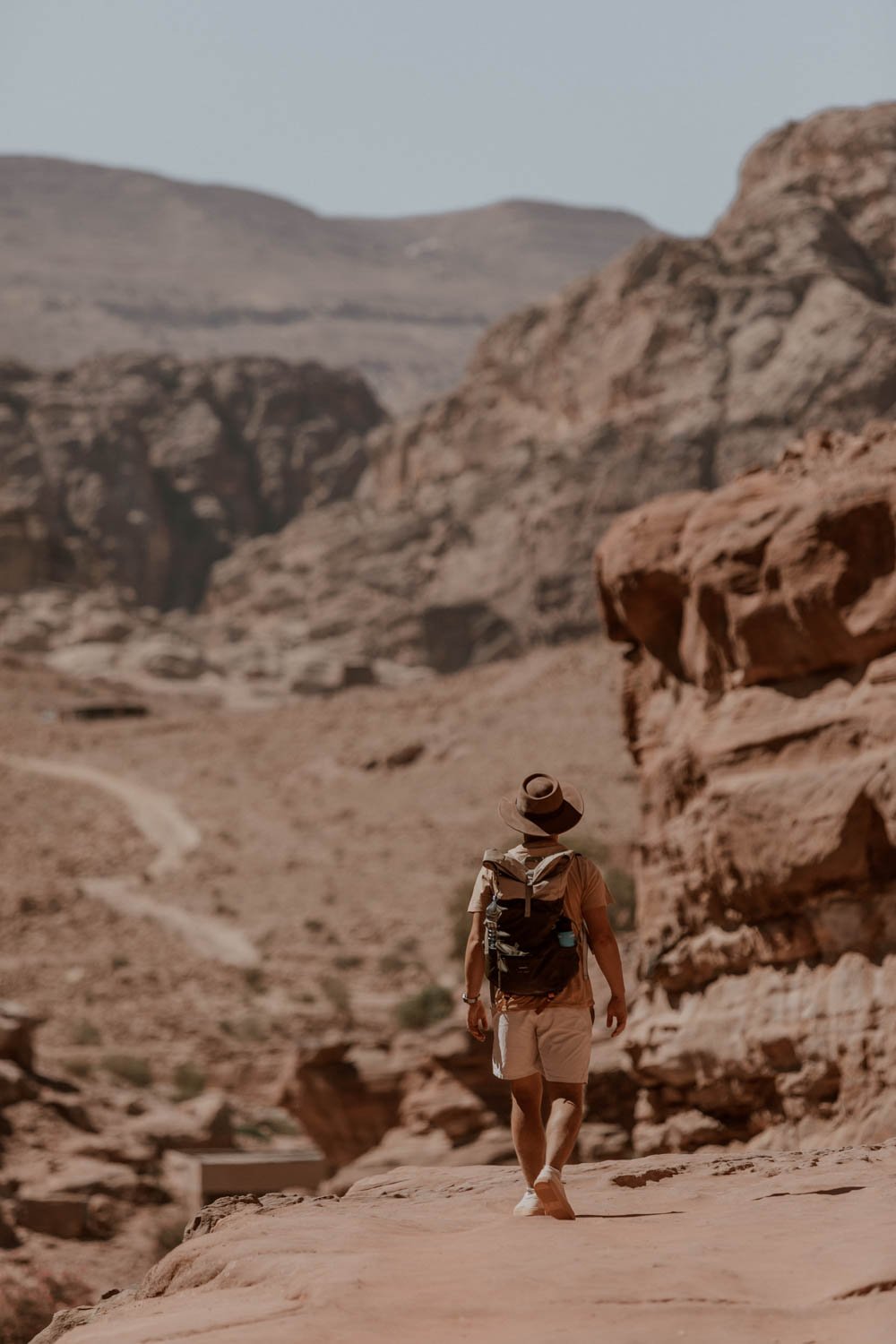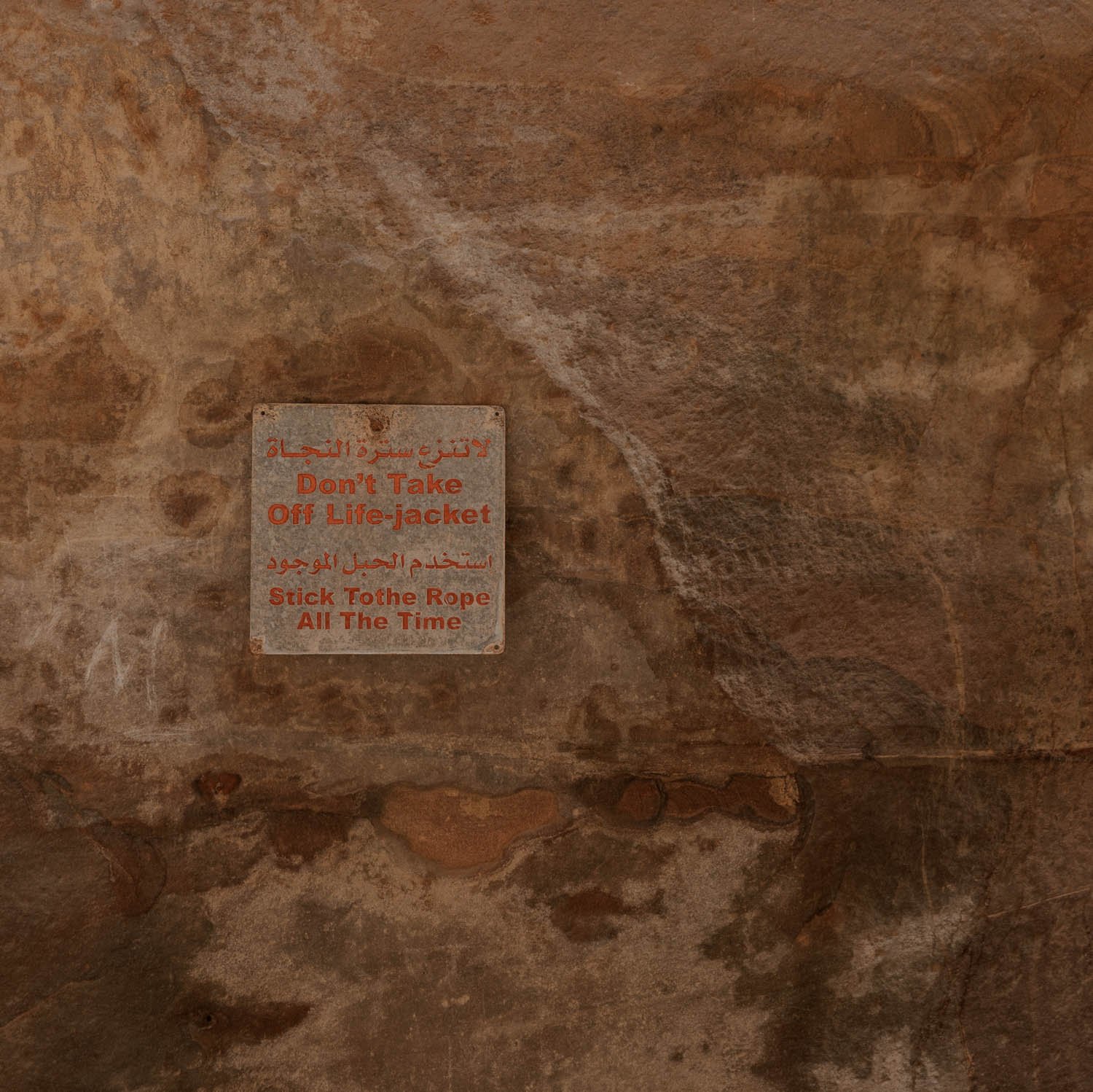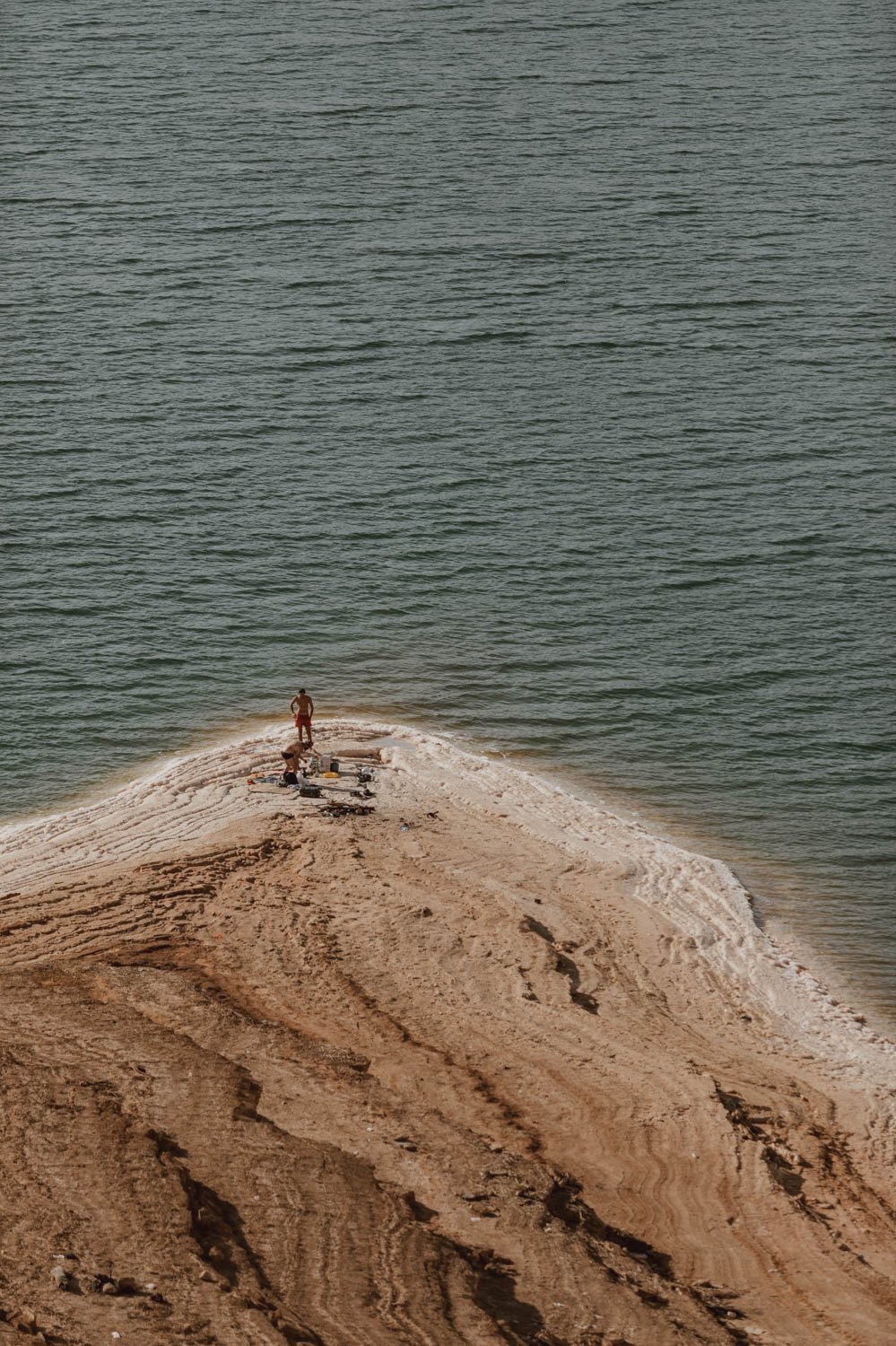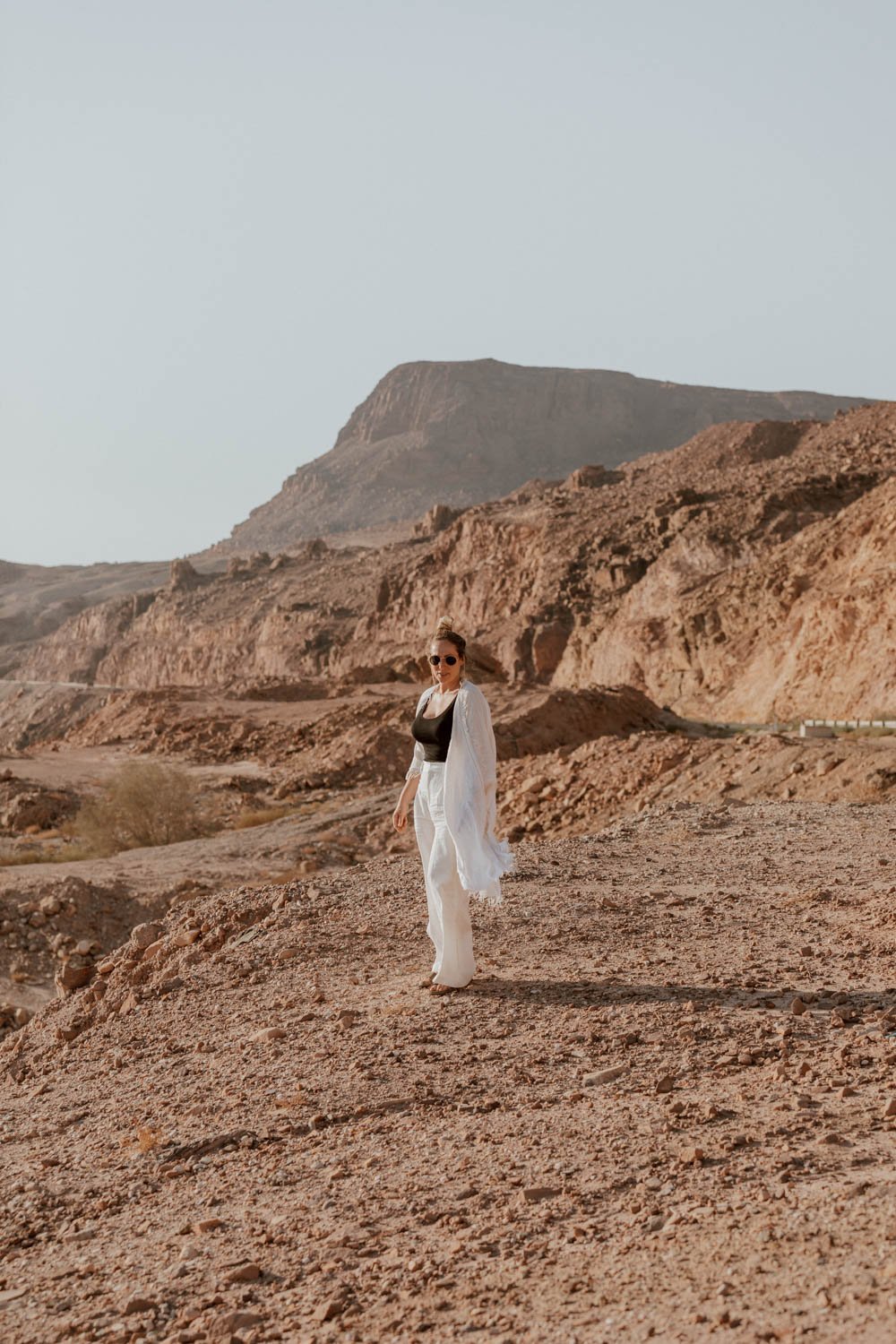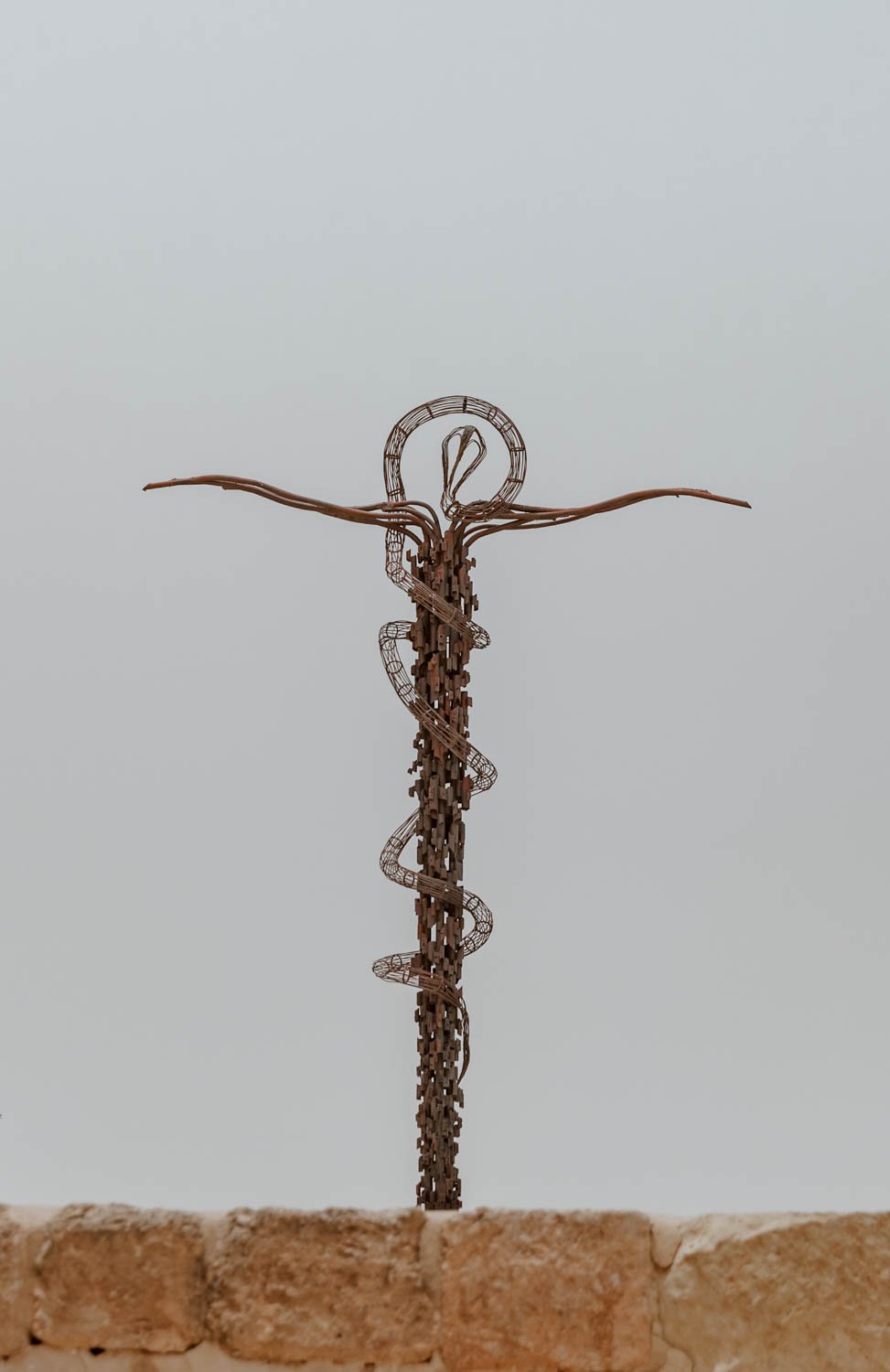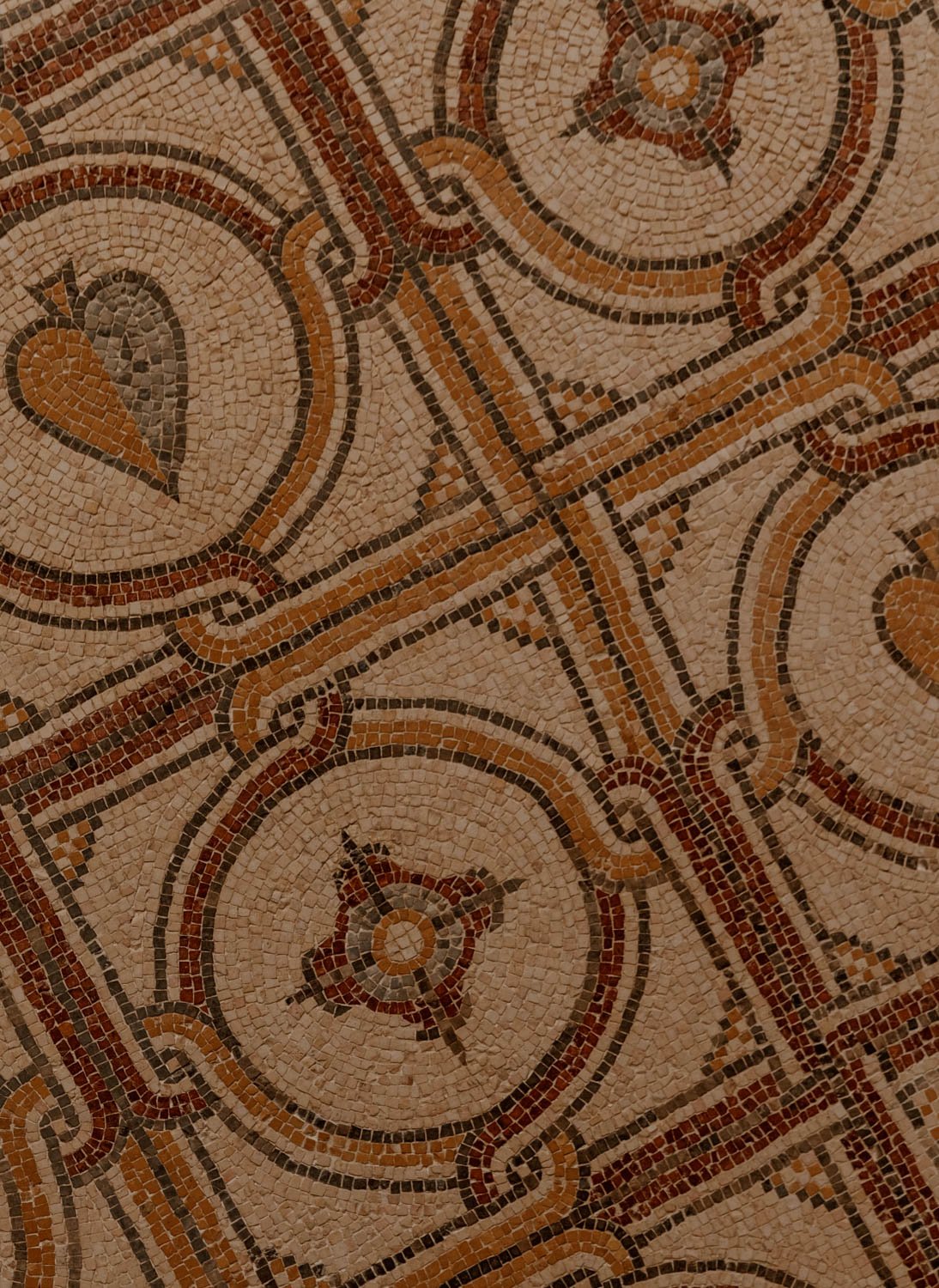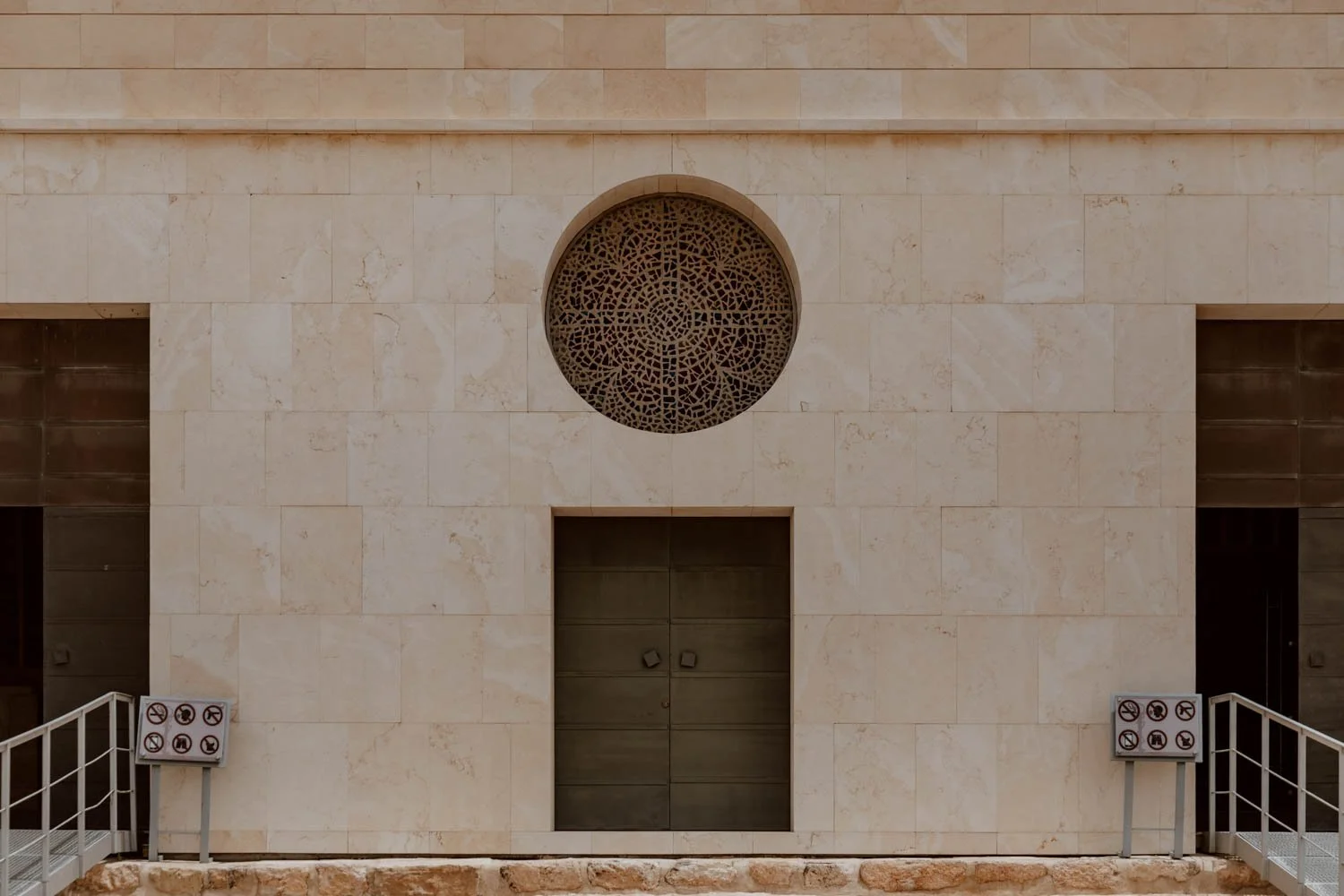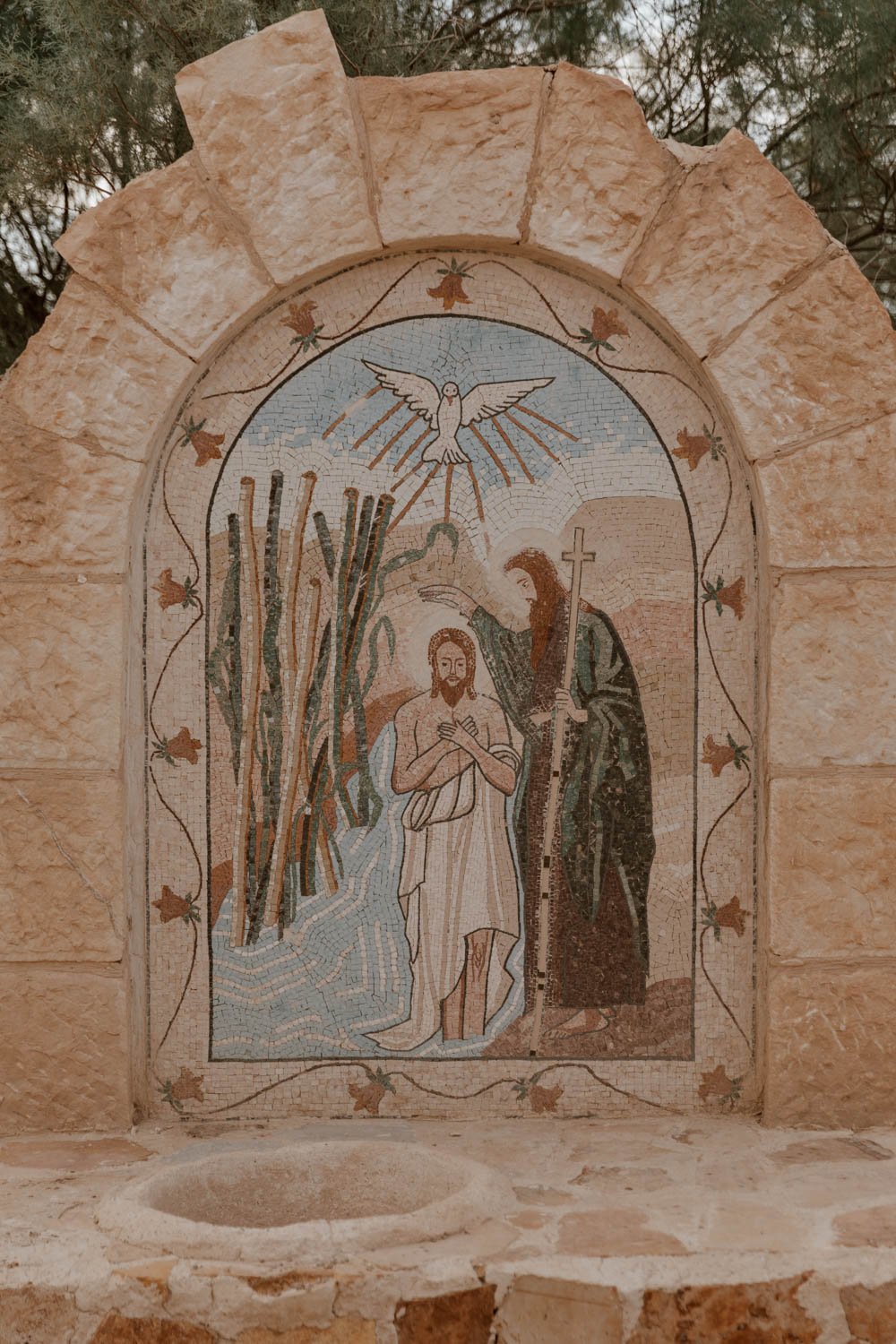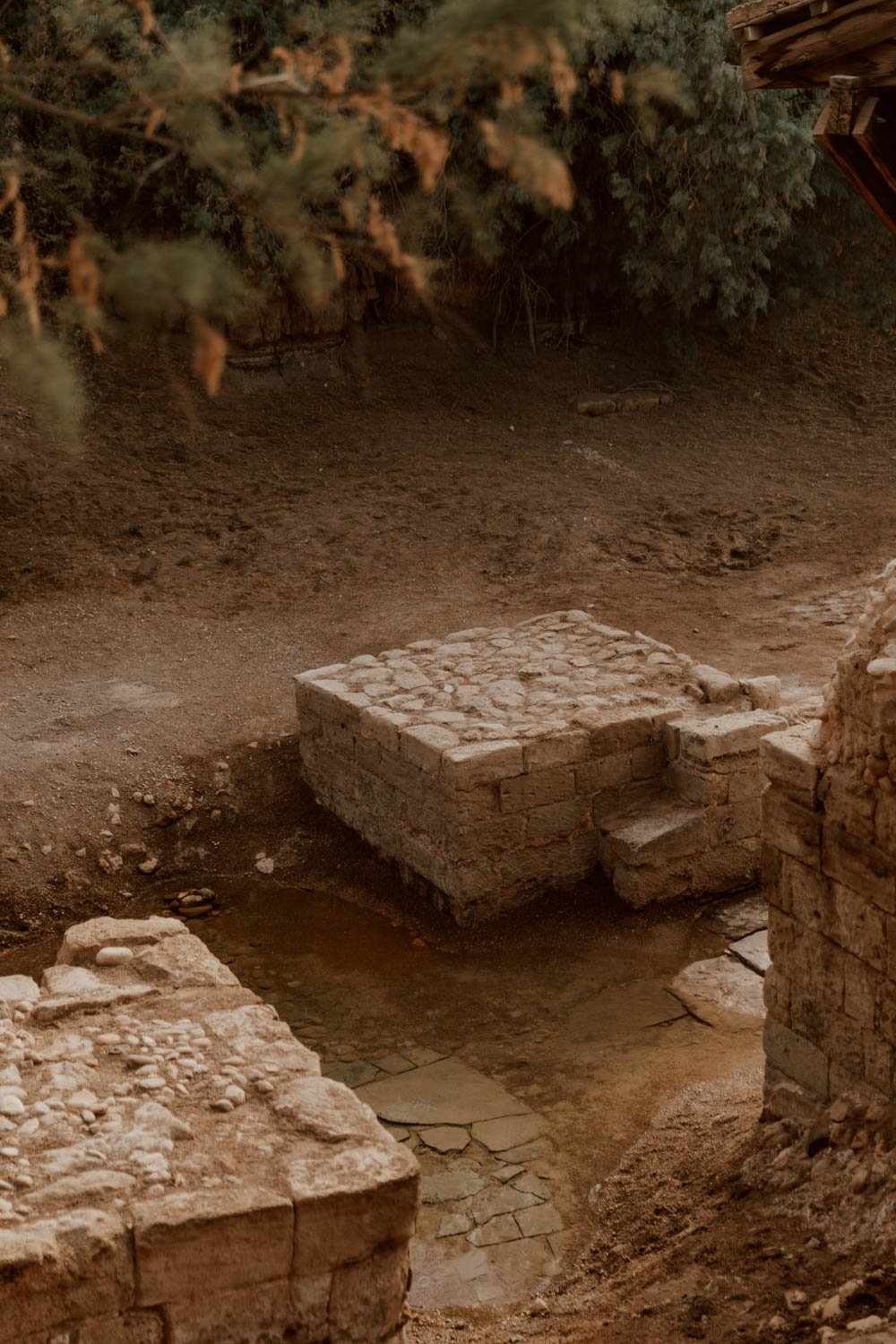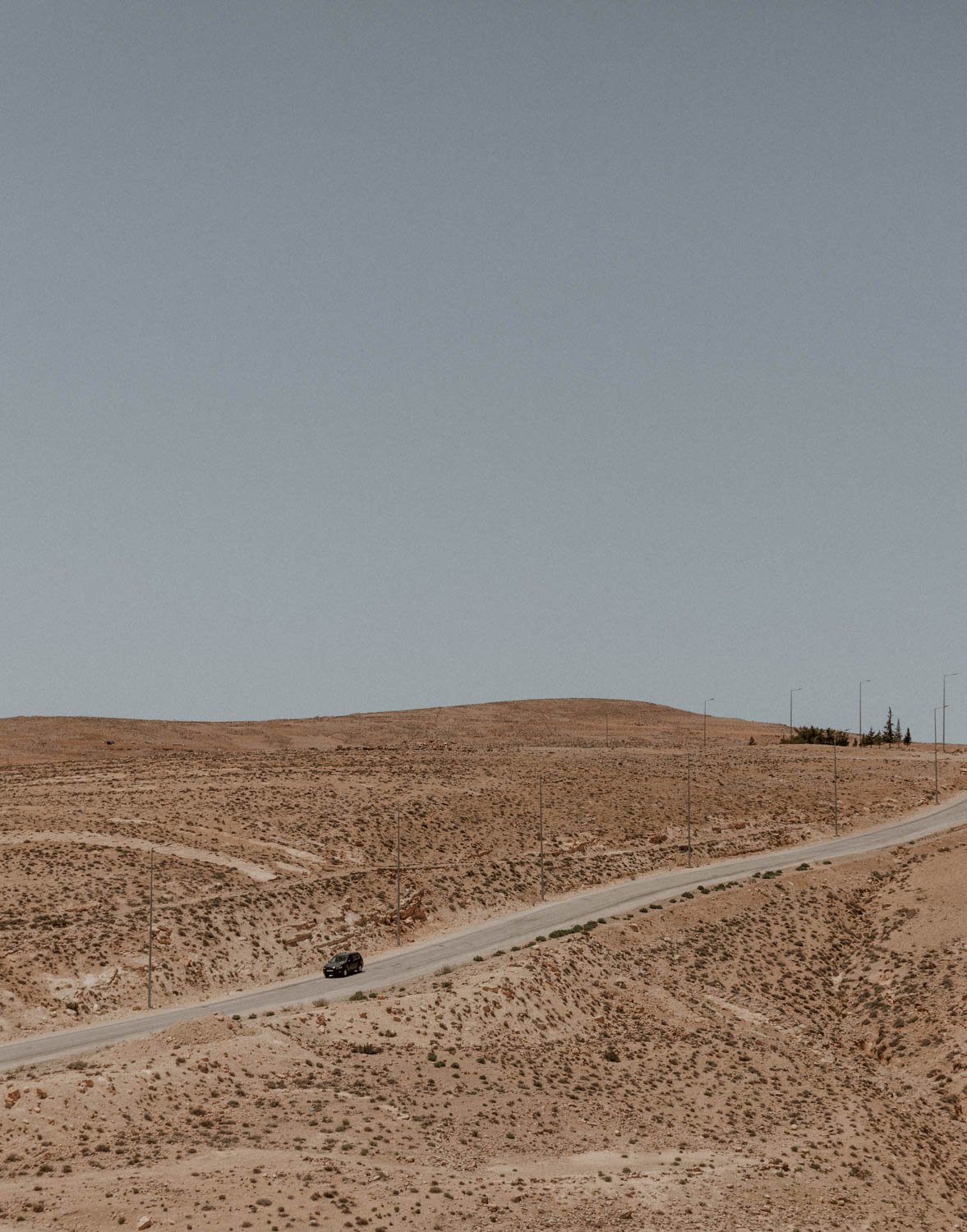With the majority of international flights arriving into Amman, many of you will spend at least a night or two exploring the frenetic streets, ancient history and burgeoning art scene of Jordan’s capital.
What some of you may not be aware of is that, given Jordan’s relative compact size, Amman is actually an excellent base from which to explore many of the country’s famous sites, including Jerash, the Dead Sea and even Petra.
The northern city is also the best hub for travellers on shorter stays hoping to visit several places via a combination of private taxis, day tours, public transport and/or popular multi-day tours departing from the capital.
In this guide we’ve provided everything you need to know to pick and plan the best day trips from Amman. To help you travel better and make things as straightforward as possible for your own travel style, we’ve included specific advice on costs and how to do each with public transport (where possible), taxis, or tours.
These are the 9 best day trips from Amman.
best amman day trips
// Jerash
// Madaba
// Mount Nebo
// Bethany Beyond the Jordan
// The Dead Sea
// Petra
// Wadi Mujib
// Wadi Rum
// The Desert Castles
Amman DAY TRIPS | HOW TO GET AROUND INDEPENDENTLY
But first, we need to give you some quick, essential context on public transport and car rentals in Jordan.
Whilst a number of destinations within this post are theoretically accessible by public transport, connections are very limited, buses slow, and coverage poor in Jordan. Amman is the rule-proving exception for visitors, as it does have some some reliable, daily bus connections to popular places but certainly not everywhere in this article.
Therefore, unless relying on a tour, for many places the only option is to visit with your own vehicle; that’s why we recommend that independent travellers to Jordan wanting to explore beyond the main sights or at their own pace rent a car. This also makes visiting more than one attraction in a single day much easier without having to rely on tours.
BUT, and this is as big a but a J-Lo’s, if you want to rent a car and do a Jordan road trip, we strongly advise against basing yourself in Amman. A car isn’t necessary in the city and driving in and around it is stressful and crowded. A far better alternative base for day trip driving and explorations in northern Jordan is nearby Madaba, or you can drive from place to place on a Jordan road trip route.
These factors combine to mean that Amman is an excellent base for day trips and further travels in Jordan, but primarily for those of you who have no plans to rent a car and appreciate that you’ll require a combination of taxis + private tours for some experiences.
Due to the dearth of public transport alternatives, do note that many tours in Jordan (or certainly the day trips from Amman) don’t specifically include a guide. Instead, they operate more like a private transport service with an English-speaking - and often very knowledgeable - driver to conveniently get people from A to B in comfort. There are exceptions to this, but if you’d like a guided tour of the specific sites, ruins or cities, your driver will be able to help source you one upon arrival at the site, but this will be an additional cost to the tour price.
Finally, if tours are a big part of your travel style, then you’ll be delighted to know that there are several highly-rated ones from Amman which will bring you to several Jordan highlights in a single day, or combine some of the best things to do in Jordan into a multi-day tour beginning / ending in the capital.
Good To Know // If you are planning on renting a car during your time in Jordan, we highly recommend reading this post: ‘Driving in Jordan & Car Rental Tips | An Essential Guide’.
The Best Tours + Day Trips from Amman
Jerash
Although Amman has its fair share of impressive Roman structures, Jerash’s are on another level.
On the hilltop facing the modern northern city you’ll find one of the largest and best-preserved Roman sites in the Middle East; we’d put it up there alongside the best Roman sites we’ve visited across several trips to Italy.
‘Gerasa’ was incorporated into the new Roman province of Arabia in 106 AD, and flourished as a wealthy stronghold thereafter. An 8th century earthquake saw it abandoned until rediscovery in the 19th century, but its prestige and influence is clear to see amongst the many ruins.
Hadrian’s Arch, the Oval Plaza and the two theatres are highlights, whilst chariot battles are re-enacted daily - there’s sometimes also a random bagpipe performance.
It’s a large site which requires at least three or four hours wandering, but the proximity and accessibility from Amman makes it feasible as a half-day experience.
How to Visit Independently | The good news for independent travellers who don’t have a car is that Jerash is easily accessible by bus from Amman. Buses leave frequently - when full - from Amman’s northern bus station (also known as Tabarbour, find it here on Google Maps) and drop off only a short walk from the ruins.
The journey should take no more than 50 minutes and cost approximately 1JD.
It is also possible to visit Jerash with a private taxi driver, who will wait outside whilst you explore the ruins. We had multiple taxi drivers offer this very service whilst exploring Amman, but prices depend very much upon how good you are at haggling; don’t expect to get them lower than 40JD for the return trip and remember that the art of a good haggle is for all parties to be happy.
Alternatively, journey time with a rental car is around the same and there is plenty of free parking, both in the dedicated car park (maps) and the overflow carpark around the corner (maps).
Take a Tour | This highly-rated and popular tour offers the chance to tick off three of the most visited attractions in the north of Jordan - Jerash, Ajloun Castle and Umm Qais all on one day trip. Do note that, as we mentioned in our introduction, this is a transport-only option. Find full details here.
If you’d prefer to focus purely on Jerash and be led through the ruins by an English-speaking guide, consider this popular option. It also includes entrance to Jerash, which is useful if you don’t plan on buying the Jordan Pass.
The same tours are also available on Viator, but do note that they are more expensive.
Plan | Entry is included within the Jordan Pass, or otherwise costs 10JD per person, paid on arrival at the ticket office. The site is open every day from 8am.
For more information and inspiration, read our guide to the Jerash Ruins.
As we’ve noted above, most tours to Jerash include time at Ajloun Castle, a 12th century fortress that was built under the rule of the sultan and military leader Saladin. Very few original features remain within the castle, but the views from its position atop a hill are wonderful. If visiting independently, we’d recommend combining the two.
Madaba
This small city is home to a large Christian community, and is globally renowned for its mosaics. The start attraction is the ‘Madaba Map’, the oldest surviving cartographic depiction of the Holy Land. Dating from the 6th century AD, it’s incredibly intricate and well-preserved in its original setting of St George’s church.
We spent a few nights in Madaba at the end of our two-week trip in Jordan, and it offers a nice change of pace from the capital alongside quite different perspectives on the country.
How to Visit Independently | A little under an hour away, Madaba is another of our Amman day trips that is actually very accessible with public transport, with buses and minibuses leaving from several different stations across the city. You can find full details here.
Alternatively, if you have your own vehicle it’s an easy 45-minute to one hour drive between the two cities. There are a number of car parks in Madaba (both paid and free) in the town centre, just type ‘parking’ into Google when you’re near or try this free parking by the visitor’s centre first.
Take a Tour | This well-priced private half-day tour with Amman pick-up includes time to explore Madaba alongside a visit to Mount Nebo.
Alternatively, if you’d prefer a group tour, consider this highly-rated full-day option which includes Madaba alongside Mount Nebo, the Bethany Beyond the Jordan and time to relax upon a Dead Sea Beach. Find out more here.
Plan | Find more information + inspiration in our guide to Madaba.
If visiting independently, we’d recommend combining Madaba with Mount Nebo - see below for further details on how to do this.
Petra
The jewel in Jordan’s crown, the ancient city of the mysterious Nabataeans will already be a central part of your plans. Beyond the well-known photo opportunities though, there is much more to Petra than meets the eye, and the vast site deserves at least one full day of slow exploration.
However, we appreciate that some of you may not have that much time on your hands, and will absolutely want to visit this New Wonder of The World.
You can read our guide - A Definitive Guide to Visiting Petra - to help make your decision about what’s best for you.
Do It Independently | The Jett bus company offers daily round-trip departures from Amman to Petra, so it’s possible if you’re happy with the early start.
Buses depart at 6.30am and arrive in Wadi Musa at 9.30am, with the return trip leaving at 5pm and dropping you back off in Amman around 8pm. It’s 10 JD one-way or 20 JD for the round-trip.
One travel hack you could do is book a round-trip but give yourself one night in Petra, thereby giving you much more time to explore the site and go at an enjoyable pace across two days.
Visit the Jett website and book tickets here. Remember that you’ll also need to get a taxi to/from the bus station.
Whilst it is theoretically possible to visit Petra on a day trip from Amman with your own vehicle, given the amount of kilometres you’ll cover on foot at the actual site, having to complete a six-hour round trip drive - even if you split the time behind the wheel between two people - is unlikely to be something you want to take on. We know we wouldn’t.
Take A Tour | If time is short, you don’t fancy the bus, and using Amman as a base for your Jordan explorations is the only possibility, we’d highly recommend taking a tour.
Unsurprisingly, there are an abundance on offer that include time at Petra. However, the most important thing is booking one that allows you enough time to explore the archeological site at your own pace, and ideally doesn’t include visits to other touristic attractions such as Wadi Rum or the Sea Sea.
For example, this Petra day tour from Amman is popular - and has good reviews - but only spends three hours in Petra (meaning no time for the Monastery or those serendipitous moments in between for which many of us travel).
You're therefore far better, if a day trip from Amman is your only option, to go for a specialist tour which dedicates a lot more time to Petra and has good ratings. We think this 12-hour, full-day private transport tour is an excellent option and won’t limit your ability to be able to appreciate your time there.
Plan | Entry is included within the Jordan Pass, otherwise its 50JD per person for a one-day visit, paid on arrival at the ticket office.
To help you travel better in Petra, and get ahead of the curve on mistakes to avoid, read our ‘23 Things To Know Before Visiting Petra’, and ‘A Short Guide to Petra Entry Fees & Tickets’
Wadi Mujib
Whilst Jordan’s most famous wadi - meaning a valley, ravine, or channel that is dry except in the rainy season - is Wadi Rum (see more on that below), there are a number of other wadis scattered across the country, including the popular adventure playground of Wadi Mujib Biosphere Reserve.
Extending from the heights of the Karak Mountains down to the Dead Sea, this 212 square kilometre gorge is known as Jordan’s Grand Canyon and is home to several seasonal and year-round rivers, as well as a whole host of trails that can be attempted by travellers.
The most popular is the self-guided and easily accessible two-kilometre Siq Trail, a veritable assault course of ropes, rocks and fast-flowing water.
You will get wet!
After a relatively sedate couple of weeks in Jordan (at least physically), this was a wonderfully adventurous activity and something we highly recommend all visitors to the country give a go.
Do be aware however that due to dry season droughts, flash floods, and safety priorities, the Siq trail and two other 'wet' Wadi Mujib trails, are only open from April to the end of October.
If you're travelling Jordan during those months, we highly recommend you make a point of adding this adventure to your itinerary.
How to Visit Independently | Another possibility for the independent traveller, but really only for those with their own vehicle (or those willing to hire a taxi). It’s a pleasant 75-minute drive from Amman to the Wadi Mujib Adventure centre (from where the trails begin, found here), and free parking is available. Do note however that this is a super popular activity in Jordan, and the car park gets very full very quickly: its location on the side of the Dead Sea Highway means that when spaces are gone, they’re gone.
Take a Tour | Almost all tours that can be booked in advance involve the Siq Trail (as opposed to other trail options). For this reason, as the Siq Trail now has various ‘lifeguards’ in situ along the trail and no longer requires a guide, most tours themselves are self-guided - including these two popular options:
Wadi Mujib Siq Trail Hiking Experience with Amman Panoramic Tour (Viator)
Wadi Mujib Siq Trail Private Hiking Tour (Get Your Guide)
Plan | Wadi Mujib is not included in the Jordan Pass. Instead, there are varying costs depending upon which trail you’d like to follow: the Siq trail costs 21JD for non-Jordanians, 15JD for Jordanians, and 18JD for residents.
We’ve written a complete guide to canyoning in Wadi Mujib, and recommend heading over there for further information.
What About Wadi Rum?
Located at the very south of Jordan - and more than a four-hour drive from Amman - visiting Wadi Rum on a day trip from the capital is really not feasible, even for the most determined traveller.
However, if you’re visiting Jordan without your own vehicle, the good news is that there are plenty of highly-rated multi-day tour options - starting from Amman - which include the Wadi Rum desert and allow you to discover more of the country at a slower pace.
This is a sensible option if you don’t have very long in Jordan.
Our recommendations include:
Two-Day Petra, Wadi Rum & Dead Sea | Ideal for those short on time, spend the first day in Petra before driving across to Wadi Rum and spending the night in a Bedouin camp. The following day, head out on a jeep tour in the desert before travelling onwards to the Dead Sea. Hundreds of truly excellent reviews. Find out more here.
Three Day Petra, Wadi Rum, Dana, Dead Sea | Similar itinerary as above, but on the first day also includes Dana Nature Reserve, Shobak Castle and Little Petra. Another very highly-rated tour and ideal if you want to cover a lot in a short period of time. Find out more here.
Highlights of Jordan | If you have more time and would like to see lots of Jordan without having to plan everything independently, this small-group G Adventures tour allows you to discover the highlights of Jordan across eight days. Starts in Amman, and includes an overnight Bedouin stay in Wadi Rum and a jeep tour. Find out more here.
Alternatively, if you’d prefer a slightly higher standard of experience, consider this National Geographic tour of Jordan by G Adventures.
Find out more about one of our favourite places in Jordan, in 21 Things To Know Before You Visit The Wadi Rum Desert.
The Dead Sea
Located at 408m below sea level, the Dead Sea - so called for a salinity so high that no life can exist within its depths - is the lowest point on Earth.
Floating atop its surface is an absolute must do for any visitor to Jordan.
In fact, whilst our entire trip seemed to be filled with bucket-list moments, it was experiencing the weightlessness of floating in the Dead Sea that Emily was most looking forward to!
For visitors to the area, what you choose to do during your time here depends very much upon how you visit (be that with your own car or a tour), and your budget.
The most accessible areas of the water - and those that allow you to indulge in the ritual of the famed Dead Sea mud mask - are part of the many luxurious resorts at the northeasterly end of the coast. Day access id common (and encouraged), but it’s not terribly cheap, with basic rates generally around the €25 per person mark. This is often included in tour prices, but be sure to confirm.
Thankfully, for those who’d prefer to save the pennies, there are a small number of free swimming spots. We’ve covered everything you need to know on how to access these and our top recommendations in this post.
If you’re ummmming and ahhhhing about whether to include the Dead Sea in your itinerary, we say just do it. This incredible quirk of nature that has existed for millions of years (four million to be precise), but a combination of dams in the Jordan River, the potash industry and climate change mean that this 600+ square kilometre expanse of saline water may well disappear entirely in the next 50 years.
How to Visit Independently | There is no meaningful public transport to the Dead Sea from Amman. As it extends over a large-ish geographical area, we wouldn’t recommend attempting to visit independently without your own rental vehicle.
Take a Tour | The most popular tour involves a transfer to one of the exclusive Dead Sea resorts where you can access the private beach, the sea and the mud baths. Additionally, you’re usually able to pay an extra fee to access all areas of the hotel as well as enjoy a lunch.
There are two super popular tours with excellent reviews offering this day trip experience: this one and this one.
Alternatively, you can join a tour which encompasses the Dead Sea alongside other popular destinations in the area: this tour includes Madaba, Mount Nebo, and the Dead Sea, alongside a visit to some of Amman’s biggest attractions. This would be an excellent option if you want to squeeze in a lot in a short period of time, but may not be suited to slower travel styles.
If you’d prefer to combine a trip to the Dead Sea with Jerash, consider this option instead.
There are also some shuttles and private cars available on Bookaway.
Plan | If going on this day trip independently, it makes sense to pair it with Wadi Mujib canyoning and / or a stop at Mount Nebo.
We’ve just published our Complete Guide to Visiting the Dead Sea, so if you’re planning on visiting Jordan in the near future, check it our for all our personal advice on how to visit and where to stay.
Mount Nebo
Towering 1,000 meres above the desert and dry farmlands below is one of Jordan’s most important Christian holy sites.
Known locally as Siyagha, Mount Nebo is the highest point of the ancient kingdom of Moab and where Moses, according to the Old Testament and scholars that have followed, was granted a view of the Promised Land - and where he died soon after.
A place of pilgrimage for early Christians from Jerusalem, a small church was built here in the second half of the 4th century to commemorate the life and death of the man regarded as a prophet by all three Abrahamic religions.
And whilst much has changed, been reconstructed, and redeveloped at this site in the intervening 1600 years, Mount Nebo’s religious and historical significance remains as does the opportunity to cast your eyes across that very same view.
Though an important pilgrimage site first and foremost, particularly for Christians, there is also enough here to interest the non-religious traveller for a short stop on their way between Madaba and the Dead Sea. Indeed, the spectacular mosaics which reside within the walls of the ancient basilica are the best presented you’ll see in the country.
How to Visit Independently | At time of publication, there is no public transport from Amman to Mount Nebo, therefore it is only possible to visit independently with your own vehicle.
Driving time is around 50 minutes directly from Amman, or 15 minutes from Madaba which you have to drive through to reach Mount Nebo. There is a free visitor’s carpark right by the entrance.
Find Mount Nebo here on Google Maps.
Take a Tour | For those wanting to join a tour to visit Mount Nebo, we’d recommend the same two tours that visit Madaba - this half-day private tour, or this group tour which also includes Bethany Beyond the Jordan and time to relax upon a Dead Sea Beach.
Plan | Entry is unfortunately not included within the Jordan Pass, and instead costs 3JD per person, paid on arrival at the ticket office. The site is open every day from 8am.
We’ve written a complete guide to visiting Mount Nebo, so recommend heading over there if you’re keen to add it to your itinerary.
Bethany Beyond the jordan
Whilst both technically Christians (baptised years ago whilst babies) and quite knowledgable on the subject, neither of us are particularly religious.
However, upon encountering the very spot where John the Baptist baptised Jesus and laid the foundations of early Christianity, it’s difficult to not to be moved.
Lost to the history books for centuries, it wasn’t until the 1994 peace treaty with Israel led to the clearing of landmines that the remains of churches, caves and baptismal pools were able to be safely unearthed. Using Bible descriptions and 3rd to 10th century pilgrims, scholars were finally able to identify the where Jesus was baptised, a claim sanctified with an open-air mass by Pope John Paul II in the year 2000.
That place is Bethany Beyond The Jordan.
Due to its location at the border between Jordan and the West Bank - and the associated security concerns - visits here require a guided tour, included in your ticket price. And whilst the guide that led our tour was fairly disappointing and failed to focus on the religious significance of the site, we honestly believe that whatever your religion, or indeed whether you consider yourself religious or not, a visit to Bethany Beyond the Jordan is an important consideration for any Jordan itinerary.
How to Visit Independently | The Baptismal Site’s rather isolated location means that independent visits here from Amman are only possible with your own vehicle. It’s around an hour drive from the capital, and you can park up in the free carpark before going your tour.
Take a Tour | For most without a hire vehicle, the only way to reach Bethany Beyond the Jordan is on an organised tour from Amman, and there are a number of options to choose from:
If you only have interest in visiting the Baptismal Site, take a look at this private tour from Amman.
This group tour includes Bethany Beyond the Jordan, Madaba and time to relax upon a Dead Sea Beach.
Plan | Tickets to Bethany Beyond the Jordan are not included in the standard Jordan Pass, but an add-on can be purchased at the same time at a cost of 8JD.
Alternatively, tickets can be bought separately on arrival for 12JD.
Note that once you arrive at the ticket office, you will be ferried over to the actual site on a minibus, with tours departing every 30 minutes. Although do note that the it is not uncommon for the staff to wait until they have a full cohort - between 12 to 14 people - to depart, meaning that tours may only happen once an hour, as happened to us.
For further details, be sure to take a look at our Short Guide to Bethany Beyond the Jordan
The Desert Castles
Head east of Amman, and you can follow a 250-kilometre loop that traces the once dusty roads between five 7th and 8th century desert castles, built by the Umayyad dynasty.
Referred to as ‘desert castles’ - or qasr or qusur in Arabic - by the 19th century archeologists who excavated the area, these impressive structures actually represent a variety of early-Islamic buildings built by the Umayyad caliphs as rural retreats, among them hunting lodges, palaces and bathhouses (often integrating far older buildings that once stood in their place)
Qasr Al-Kharanah / The best known of Jordan’s desert castles - and the closest to Amman - Qasr Al-Kharanah is also thought to be the oldest and is in remarkably good condition. Find it here on Google Maps.
Qasr Amra / The only desert castle that has been declared a UNESCO World Heritage Site, it is perhaps one of the most fascinating, with extensive interior frescoes (the oldest of which is thought to be 1300 years old!). Find it here on Google Maps.
Qasr Azraq / The only true castle, in name as in purpose, the vast black basalt Qasr Azraq was once a Roman fortress, although most in the western world will know it as the headquarters of TE Lawrence during the Arab Revolt. Find it here on Google Maps.
Qasr al-Hallabat / Built on the site of a former Roman fort, Qasr al-Hallabat is one of the largest buildings in the desert loop, designed for agricultural purposes. Visitors can however visit a bath and mosque attached. Find it here on Google Maps.
Qasr al-Mshatta / Located close to Queen Alia International Airport, this palace was extensively restored in 2013 and is famous for the elaborate ornamentation of its southern main façade. Find it here on Google Maps.
How to Visit Independently | For what should be fairly obvious reasons, the desert castles are not accessible with public transport but checking out a few makes an ideal day trip from Amman for those with their own rental vehicle.
To reach all the castles - and allow enough time to fully enjoy each of them - would take a considerable amount of time, so we’d perhaps consider skipping Qasr Mushatta, near Amman’s airport.
Take a Tour | If driving out into the desert fills you with dread, you don’t have a car, or would prefer to join an organised excursion, consider this well-priced and popular tour from Amman that includes a private guide. The tour lasts five hours and covers all the castles. Find out more here.
Plan | The castles are open from 8am to 6pm in the summer (May to September) and until 4 pm in the winter (October to April). All the desert castles are included within the Jordan Pass, or for those that don’t have the pass, each cost 1JD per person, per castle.
Your Next Stop
11 Wonderful Things to Do in Amman
16 Essential Things to Know Before You Visit Amman
Where to Stay in Amman (published soon)
13 Wonderful Things To Do In Jordan
A Complete Guide to Madaba | Jordan’s Mosaic City
A Complete Guide to Visiting Petra
A Guide to Canyoning in Wadi Mujib | The Best Adventure in Jordan
The Perfect Jordan Itinerary (published soon)
23 Thing to Know Before You Visit Jordan (published soon)

